The following is the result of downloading information from an accounting system. Basically, I was tasked with sorting through expenses from this year from an online system; once the information was downloaded from the online system, it was not formatted as a spreadsheet (so I couldn't easily use a simple lookup). The information was downloaded as a spreadsheet, however it didn't contain check numbers or names; excel formatted those away for some reason. The only thing that was left is the long stringy document, where each item in the PDF downloaded (which contained check numbers and names) was placed in column 1 (see picture 1), whereas it should have been placed in something formatted like picture 2. Obviously though PDF's do not maintain formatting.
So baring some way that I can transfer the PDF to a workbook and run an analysis (IE through copy paste or save as) I needed to get information from this long stringy thing (it's at 9000 rows at the moment, added in an excerpt).
First, this code sets the worksheet pers as a worksheet, gets the length of data in pers (example in picture 2), and length of data in expensesheet (example in picture 1)
Then it scans pers for items (prior to writing this code items were added manually - such as in the case of picture 2, 'supply 1' and corresponding information that can help denote supply 1, ie invoice #, description, date cut, and so on).
For each of those items, it then scans the "expense sheet". It tries to match the invoice number (which is the closest thing to a unique ID in this case) to the value in cell i, 1; if it exists, it then scans 'upwards' until it finds a long enough string so that it can be the 5 unit string; the one that contains a date, a check number, an amount, and a name, as well as a batch number and a memo.
Once it finds that string, it then splits it into an array, and then seeks to place it in the corresponding cells to the right of that row in worksheet pers.
Issues: 1) I keep receiving an error 400. Normally when I receive an error VBA shows what line. What is this? How can I set up an error catching block so that the editor will provide me more details on the error (ie place it occurred, reason for occurrence, etc) 2) I'm assuming that the long row (in this case its 12th from the top) can only be identified through its length. Is there a better way to identify the long row? Perhaps if it contains multiple dashes? 3) Does anyone know of a way to easily transfer a PDF of an accounting printout so that it retains its formatting when saved or copied to a spreadsheet? 4) Is there a way that this spreadsheet could be easily formatted through excel so that it can more adequately fit into the proper mold (more like picture 2)?
Option Explicit
Sub findDetailMemo()
Dim pers As Worksheet
Set pers = ThisWorkbook.Sheets("PERS")
Dim persLength As Long
persLength = pers.Range("a1").End(xlDown).Row
Dim expenseLength As Long
expenseLength = Range("a1").End(xlDown).Row
Dim currentDetail() As String
Dim i As Long
Dim j As Long
Dim k As Long
Dim tempInt As Long
'first scan all of the items in the pers unit
For k = 2 To 10
'next scan all of the expenses
For i = 2 To expenseLength
'if the invoice # is found
If InStr(Cells(i, 1), pers.Range("a1").Offset(k, 3)) <> 0 Then
'scan upwards; make sure you don't scan beyond the range of the spreadsheet
For j = i To 1 Step -1
'if the scan upwards finds a string that is 80 characters or more
If Len(Cells(i - j, 1)) >= 80 Then
'split it at the -
currentDetail = Split(Cells(i - j, 1), "-", -1, vbTextCompare)
'add it to the pers sheet
pers.Range("a1").Offset(k, 11) = currentDetail(0)
pers.Range("a1").Offset(k, 12) = currentDetail(1)
pers.Range("a1").Offset(k, 13) = currentDetail(2)
pers.Range("a1").Offset(k, 14) = currentDetail(3)
Exit For
End If
Next j
Exit For
Else
End If
Next i
Next k
End Sub


